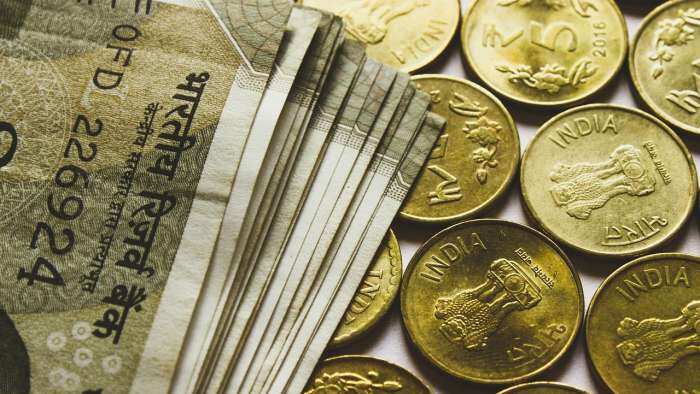Low pay, inequality in India? ILO wants wage law
More than 51 per cent of the people employed in India, as per 2011-12 data, were self-employed and as many as 62 per cent of wage earners are employed as casual workers, it said.

International Labour Organisation has called for stronger implementation of wage law in India amid persistent low pay and inequality, especially in case of women.
ILO's India Wage Report said that the country's economy in the past two decades has seen an annual average GDP rate of 7 per cent but low pay and inequality persist.
India's economic growth, it said, has resulted in fall in poverty, moderate change in employment patterns with a growing proportion of workers in services and industry.
However, a substantial proportion of workers (47%), continue to be employed in the agricultural sector, it said.
The economy still faces informality and segmentation, the report said.
More than 51 per cent of the people employed in India, as per 2011-12 data, were self-employed and as many as 62 per cent of wage earners are employed as casual workers, it said.
It added that while the organised sector has seen a rise in employment, many jobs in this sector too have been of casual or informal nature.
The report pointed out that though the overall wage inequality in India has declined somewhat since 2004?05, it continues to remain high.
The decline in overall wage inequality has been largely due to the doubling of the wages of casual workers between 1993-94 and 2011-12. Nonetheless, the sharp increase in wage inequality for regular workers between 1993-94 and 2004-05 has stabilised in 2011-12, it said.
On pay equality, it said that the gender wage gap however is still steep, as per international standards, despite having declined from 48 per cent in 1993?94 to 34 per cent in 2011?12.
The wage gap exists for all kind of workers ? regular and casual, urban and rural. The women employed as casual workers in the rural economy earn the lowest in India, which is 22 per cent of what urban regular male workers earn, it added.
Although, the average labour productivity (as measured by the GDP per worker has increased), the labour share, which is the proportion of national income that goes into labour compensation has declined from 38.5 per cent in 1981 to 35.4 per cent in 2013, it said.
India was one of the first countries to introduce minimum wages through the Minimum Wages Act in 1948.
But the report found that there exist challenges in providing a universal wage floor for all workers.
As per the study the minimum wage system in India is quite complex. The minimum wages are set by state governments for employees in selected ?scheduled' employment and this has led to 1709 different rates across the country. As the coverage is not complete these rates are applicable for an estimated of 66 % of wage workers.
A national minimum wage floor was introduced in the 1990s which has progressively increased to Rs 176 per day in 2017 but this wage floor is not legally binding, in spite of a recurrent discussion since the 1970s.
In 2009-10, nearly 15 per cent of salaried workers and 41 per cent of casual workers earned less than this indicative national minimum wage. About 62 million workers are still paid less than the indicative national minimum wage with the rate of low pay being higher for women than for men, it highlighted.
Watch Zee Business video here:
The ILO report called for extending legal coverage to all workers in an employment relationship, ensuring full consultation with social partners on minimum wage systems, undertaking regular evidence-based adjustments, progressively consolidating and simplifying minimum wage structures, and taking stronger measures to ensure a more effective application of minimum wage law.
It also called for collection of statistical data on a timely and regular basis and recommended other complementary actions to comprehensively address how to achieve decent work and inclusive growth like fostering accumulation of skills to boost labour productivity and growth for sustainable enterprises, promoting equal pay for work of equal value, formalising the informal economy and strengthening social protection for workers.
Get Latest Business News, Stock Market Updates and Videos; Check your tax outgo through Income Tax Calculator and save money through our Personal Finance coverage. Check Business Breaking News Live on Zee Business Twitter and Facebook. Subscribe on YouTube.
RECOMMENDED STORIES

Power of Compounding: How soon will monthly SIP of Rs 6,000, Rs 8,000, and Rs 10,000 reach Rs 5 crore corpus target?

Highest FD rates: Here's what SBI, PNB, Canara Bank, HDFC Bank, ICICI Bank are giving to senior citizens on fixed deposits

SBI Guaranteed Return Scheme: Know how much maturity amount you will get on Rs 2 lakh, 2.5 lakh, 3 lakh, 3.5 lakh and Rs 4 lakh investments under Amrit Vrishti FD scheme

SBI Senior Citizen FD Rate: Here's what State Bank of India giving on 1-year, 3-year, 5-year fixed deposits currently

SBI Senior Citizen Latest FD Rates: What senior citizens can get on Rs 7 lakh, Rs 14 lakh, and Rs 21 lakh investments in Amrit Vrishti, 1-, 3-, and 5-year fixed deposits
06:30 PM IST









 Rajya Sabha passes maternity benefit bill; paid maternity for 6 months now becomes a law
Rajya Sabha passes maternity benefit bill; paid maternity for 6 months now becomes a law India continues to have one of the lowest female workforce participation
India continues to have one of the lowest female workforce participation